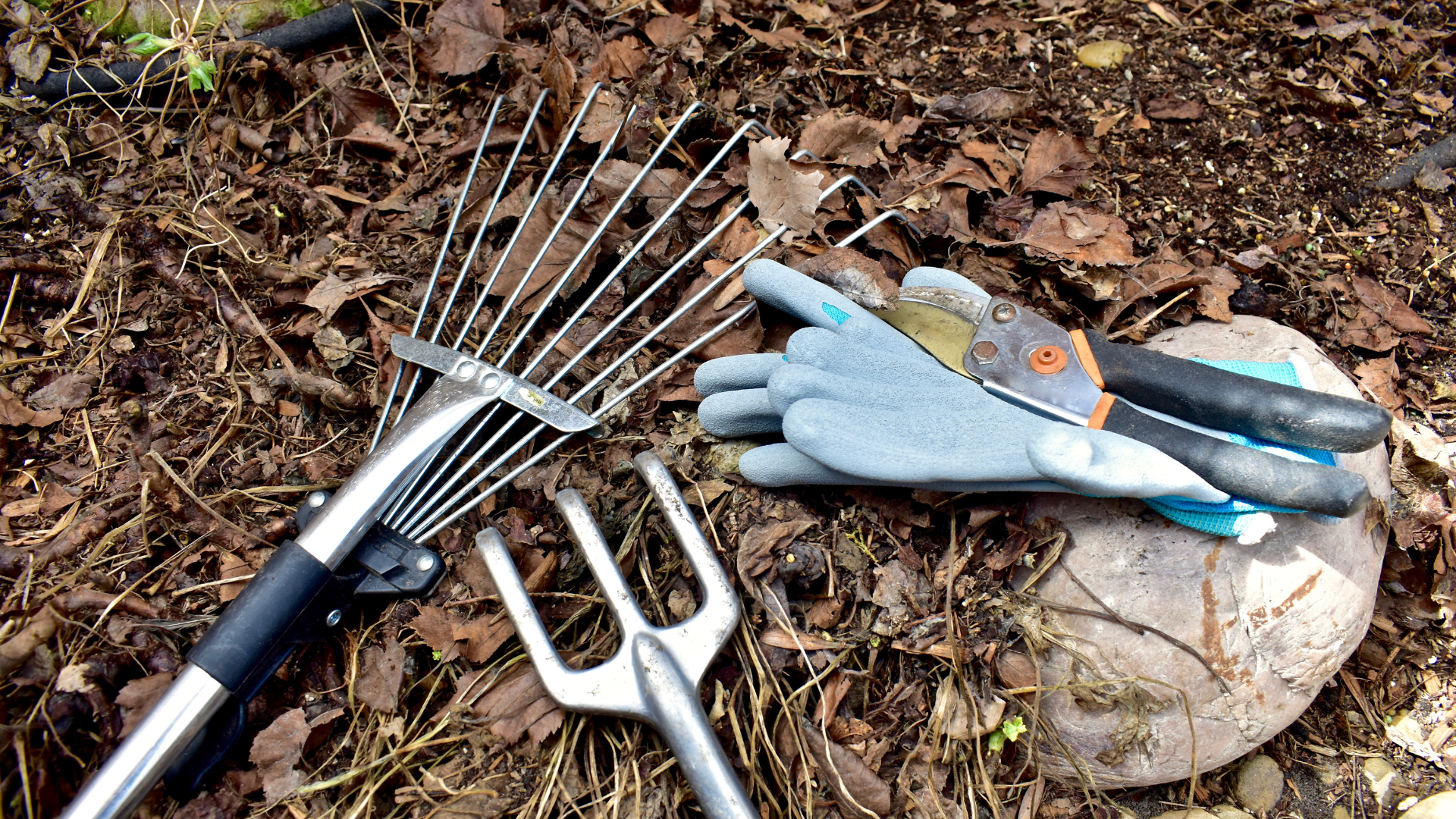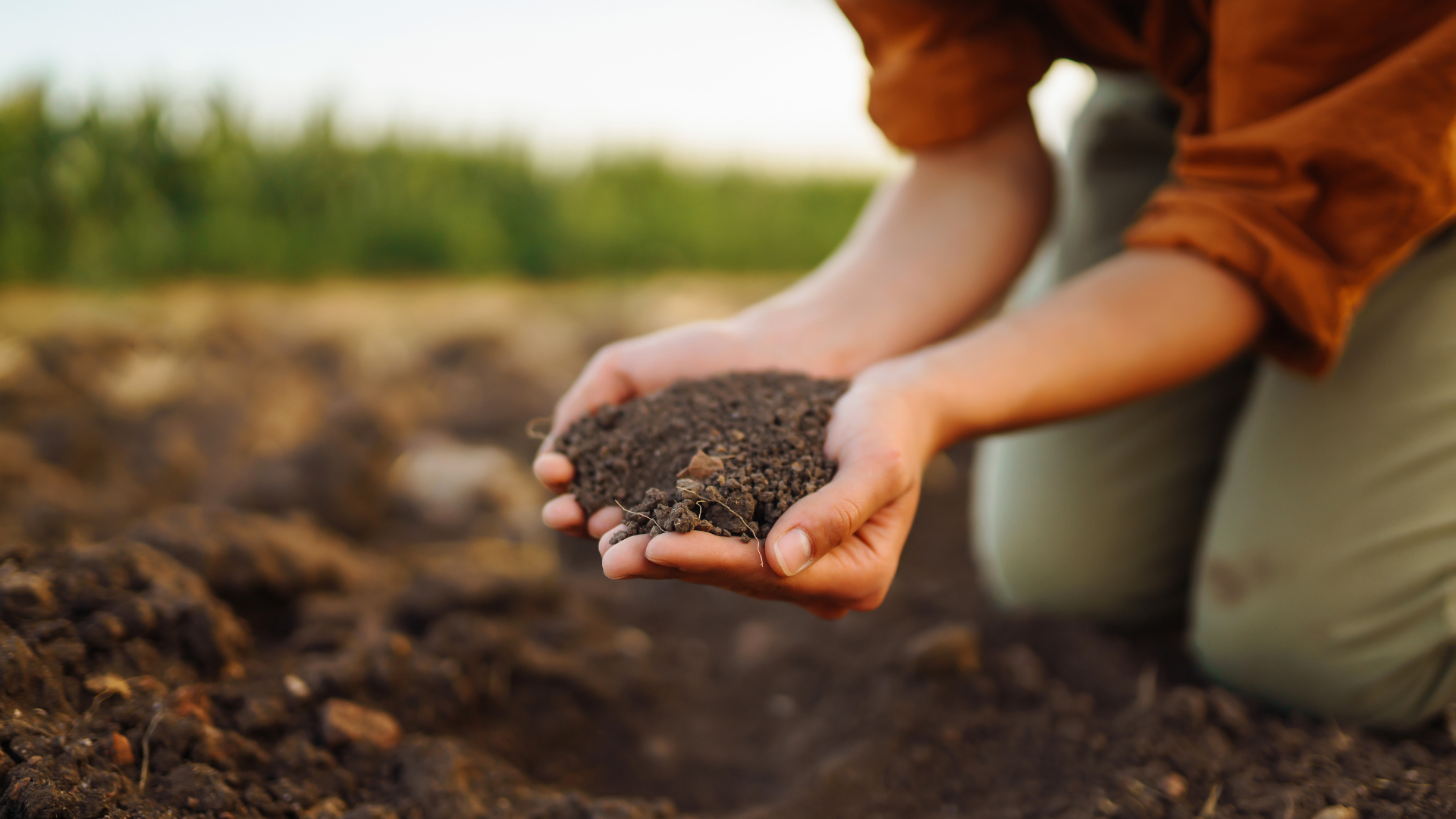As the chilly grip of winter begins to loosen its hold, garden enthusiasts everywhere await spring's arrival. It's that time when nature awakens from its slumber, and your garden transforms into a vibrant canvas of colors. But before you get lost in the excitement of blossoms and butterflies, it's essential to properly prepare your garden for spring.
In this guide, we'll break down the process of prepping your garden for a successful season. Whether you are new to gardening or already have a schoolyard, backyard or community garden, these tips will set you on the right path to creating a flourishing haven and growing food in your backyard. So, grab your gardening gloves, and let's dive into the joyous journey of ushering in springtime splendor!
Steps for Prepping Spring Garden Beds
1. Prepare Garden Tools
Before diving into spring gardening, take stock of your various gardening tools. Clean and sharpen pruners, shears, and other gardening essentials. This ensures efficient and precise cutting, making your gardening tasks more manageable. Well-maintained garden tools are a gardener's best ally.

2. Do a General Spring Cleaning and Prepare the Garden Bed
The first step in preparing your garden for spring is to assess any damage caused by long winter months. Inspect your plants for signs of frostbite, disease, or damage from ice and snow. Trim away dead or damaged branches and clear debris or fallen branches accumulated over the colder months.
Trim back overgrown fruit trees branches, shape shrubs, ornamental grasses, and cut back perennials to encourage healthy new growth. Remove weeds and dead leaves. This not only enhances the aesthetic appeal of your garden but also promotes air circulation and reduces the risk of disease.
Once you have cleared away debris or weeds in your raised beds, start loosening the bare soil. Use a garden fork or tiller, breaking up clumps and creating a crumbly texture. Rake the surface to create a smooth and level bed.
3. Preparation of Garden Soil
Soil preparation is a crucial step in ensuring a successful spring gardening season. Here are some key aspects to focus on adding compost to the soil, incorporating enhancer and amendments, and testing.
Add Compost to the Soil: Compost is a valuable organic matter that enriches the soil, improves its structure, and enhances water retention capacity. Follow these steps to incorporate compost:
- Quantity: Aim to add about 1 to 2 inches of compost to the top layer of your soil.
- Application: Spread the compost evenly over the garden beds or planting areas.
- Mixing: Use a rake or garden fork to gently mix the compost into the top 4 to 6 inches of soil. This ensures that the compost is well distributed.
Other Amendments or Fertilizer: This is the perfect time to refresh your garden beds by adding new soil and fertilizer. You may consider additional soil amendments depending on your soil's specific needs. Here are some common amendments and their purposes:
- Organic Materials: Besides compost, consider adding well-rotted manure to increase organic matter content further.
- Lime or Sulfur: Adjust soil pH based on the results of the soil testing. Lime raises pH, while sulfur lowers it.
- Gypsum: Improves soil structure and drainage in clayey soils.
- Bone Meal or Phosphorus Sources: Boost phosphorus levels for better root development and flowering.
- Volcanic Rock Dust: Products like our Natures Perfect Organic Soil Enhancer can enrich soil nutrition, improve soil structure for root growth, support microbial communities, optimize pH, and attract beneficial insects - all of which are great for plant health and promoting more robust gardens!
Soil Test: Conducting a soil testing is essential to understand the specific needs of your soil. This information helps you make informed decisions about which amendments are necessary. Here's how to do soil testing:
- Collect Soil Samples: Use a soil auger or shovel to collect samples from various areas of your garden.
- Send to Lab: Contact a local agricultural extension office or a soil testing laboratory to send your samples for analysis.
- Interpret Results: Once you receive the results, consider nutrient levels, pH, and organic materials content. This information guides your choice of soil amendments.

4. Plan Your Garden Layout
Before you start planting, take the time to plan your garden layout. Consider factors such as sunlight exposure, wind patterns, and the mature size of your plants. This thoughtful approach prevents overcrowding and allows each plant to receive the optimal conditions for growth.
For the New Gardener – Build a Raised Bed. If you don't yet have a garden you may want to consider building a raised bed. Raised beds are ideal for small scale gardeners and are helpful to use because you can fill the garden box with healthy soil and know that your garden will be nourished.
5. Start Seeds Indoors
For a head start on the growing season, consider starting seeds indoors. This is particularly beneficial for plants that require a longer growing period. Use seed starting trays and quality potting soil when you plant seeds. You can place the seed trays in a warm room with lots of light if you start your seeds in late winter. When they are almost ready to transplant harden off your seedlings when the temperatures warm. This gives the best possible start before transplanting them outdoors or to your vegetable gardens. They need time to adjust to the new environment.

Plants That You Can Grow in Early Spring Garden
There are many seeds that can be planted in the early spring. These includes beans, broccoli, parsley, arugula, kale, lettuce, and tomatoes.
6. Start Planting
It's time to kickstart the planting process for your garden. Begin by selecting healthy seedlings or young plants that have been nurtured indoors. Prepare the soil by loosening it and incorporating organic materials for improved fertility. Choose an overcast day or late afternoon for planting to minimize plant stress.
Dig holes that are slightly larger than the root balls of the seedlings and carefully transplant them, ensuring they are positioned at the same depth as they were in their original containers. Water the transplants thoroughly to help them establish in their new environment.
7. Watering in Spring
Watering in spring is a critical aspect of nurturing a thriving garden. As the weather warms up, plants require more moisture to support their growth. Begin by checking the soil moisture regularly and water when the top inch feels dry. Water deeply and in the early morning or late afternoon to minimize evaporation. Keep the soil moist, and adjust watering frequency based on plant needs, and integrating rainwater collection contribute to efficient and sustainable watering practices in your spring garden.
To enhance water conservation, consider collecting rainwater. Install rain barrels or other collection systems to your gardens and start collecting rainwater runoff from roofs. This harvested rainwater provides a natural and cost-effective irrigation source, reducing dependency on municipal water supplies. Additionally, rainwater is often better for plants, lacking the added chemicals found in tap water.
8. Mulch for Moisture and Weed Control
Applying a thick layer of mulch around your plants serves multiple purposes. It conserves soil moisture, suppresses weeds, and regulates soil temperature. Choose organic mulches like bark chips or straw to add nutrients to the existing soil, as they break down over time.

9. Set Up a Compost System
Setting up a compost system in spring is a beneficial and sustainable practice for managing organic waste and enriching your garden soil. You can set up a tumbling compost bin or three-bin composting system to separate bins or compartments to manage the composting process in stages. Once the compost system is set, choose a suitable location with good drainage and easy access.
A compost pile or bin can be initiated with a balanced mix of green and brown materials. You can use the plant trimmings or dead branches that you trimmed or leaf litter piled in your garden. you can also use your kitchen scraps or any other organic material from your home like cardboard or newspapers.
Turn the compost regularly to aerate it and accelerate the decomposition process. Keep the pile moist, but not waterlogged, and cover it to retain heat. As the weather warms up in early spring, the composting microbes become more active, breaking down the materials into nutrient-rich compost. By summer, you'll have a valuable resource to enhance soil fertility and promote healthy plant growth in your garden.
10. Maintain and Adjust
Regularly monitor the growth of your plant or vegetables, keeping a watchful eye for any signs of stress, disease, or nutrient deficiencies. Be prepared to adjust your care routine based on these observations, whether it involves tweaking watering schedules, supplementing with fertilizers, adding of compost directly or providing additional support like staking for taller plants.
Embrace flexibility in your approach to ensure the well-being of your garden. Additionally, implement a robust pest management strategy, employing organic solutions or integrated pest management techniques to safeguard against potential threats. 'It's also a great idea to keep a garden journal during the growing season. This is a great resource to look back on in future seasons to make changes to improve each year's garden.
11. Create a Relaxation Zone
Beyond the practical aspects of garden preparation, consider adding a touch of personal enjoyment. Create a relaxation zone with comfortable seating, decorative elements, and fragrant flowers. Your garden should not only be a place for plants but also a retreat for you to unwind and connect with nature.

Additional tips: Invest in Quality Garden Supplies
As you gear up for spring, invest in quality garden supplies. This includes nutrient-rich fertilizers, disease-resistant plants, and durable containers. Quality supplies contribute to your garden's overall health and resilience, ensuring it thrives throughout the season.
Conclusion
In conclusion, gearing up your garden for spring is like giving it a much-needed makeover after a long winter nap. By following these simple tips, you'll be well on your way to creating a vibrant and thriving outdoor space. Remember, start by cleaning up the debris, wake up those sleepy plants with some gentle pruning. Show your soil some love with nutrient-rich compost. Don't forget to plan ahead and choose the right plants for your region, ensuring they're the garden superstars come springtime.
Think of it as orchestrating a symphony of colors, fragrances, and textures in your own own backyard garden. With a little effort and a dash of creativity, your garden beds will become a haven for buzzing bees, fluttering butterflies, and delighted human visitors alike. So, grab your garden gloves, dust off your trusty spade, and let the countdown to spring gardening bliss begin! Happy planting!





Share and get 15% off!
Simply share this product on one of the following social networks and you will unlock 15% off!